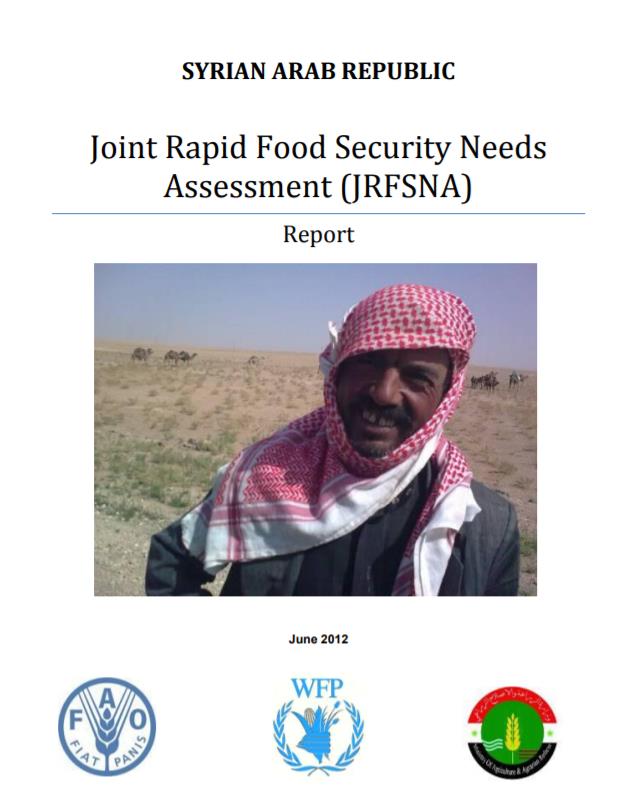
Special Report - Joint Rapid Food Security Needs Assessment (JRFSNA) to the Syrian Arab Republic
01/06/2012
Large numbers of rural people of the central, coastal, eastern, northeastern and south governorates were reported to have lost their farming- and livestock-based livelihoods and business totally or partially due to the crisis and insecurity in the country, coupled with the prolonged drought. The United Nations System in Syria, including FAO and WFP, upon the request of the Government of Syria carried out a mission in March 2011 and came up with a conclusion that the lives and livelihoods of the rural population in Syria was severely affected.
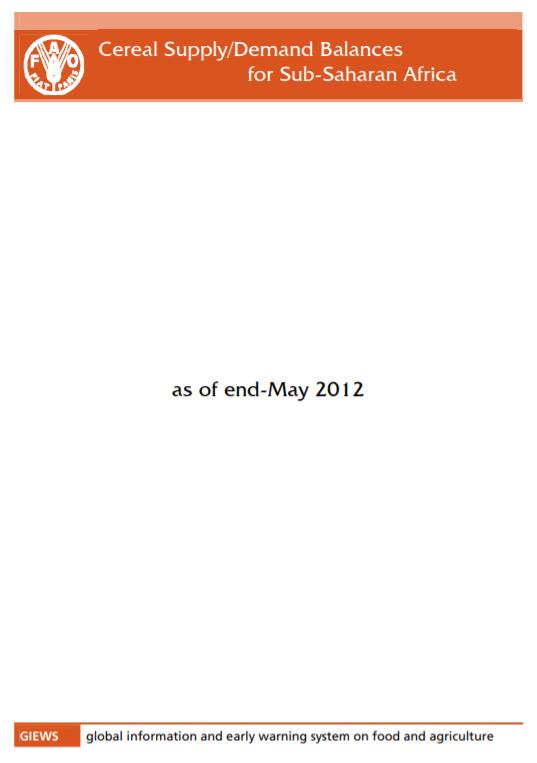
Cereal supply and demand balances for sub-Saharan African countries - No.2, May 2012
31/05/2012
The FAO/GIEWS Country Cereal Balance System (CCBS) is a database of annual supply and utilization balances for main cereals, covering all countries of the world. It has been maintained by FAO/GIEWS since 1980 and is updated on a continual basis. This statistical report, which is a subset of CCBS data, presents the current-year cereal supply and demand balances for all sub-Saharan African countries, highlighting cereal import and food aid requirements of each country. This report is complement ary to the FAO/GIEWS report Crop Prospects and Food Situation and is published four times a year, with the same schedule.
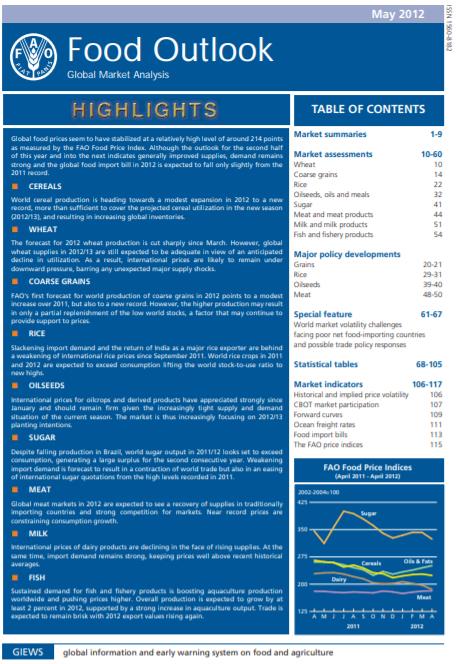
Food Outlook - May 2012
02/05/2012
Global food prices seem to have stabilized at a relatively high level of around 214 points as measured by the FAO Food Price Index. Although the outlook for the second half of this year and into the next indicates generally improved supplies, demand remains strong and the global food import bill in 2012 is expected to fall only slightly from the 2011 record.
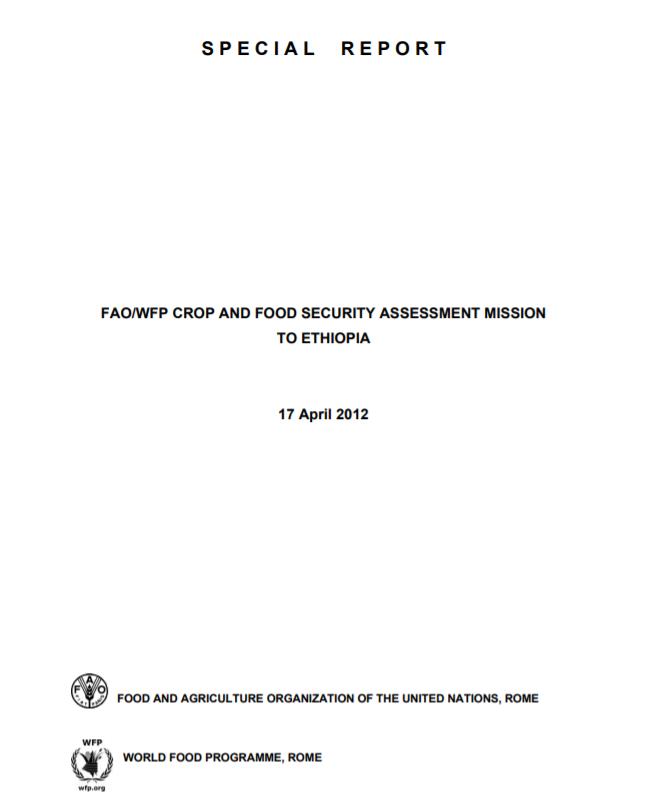
Special Report - FAO/WFP Crop and Food Security Assessment Mission to Ethiopia - 17 April 2012
17/04/2012
An FAO/WFP Crop and Food Security Assessment Mission visited Ethiopia from 31 October to 26 November 2011 to estimate the 2011 main meher season cereal and pulse production; review the 2011 secondary belg season harvests; forecast the 2012 belg season production; assess food security trends in 2011; and project food assistance requirements for the 2012 marketing year (January/December). Accompanied by experts from the Ministry of Agriculture and Rural Development (MoARD), the Central Statistics Authority (CSA) and by one observer from the Joint Research Centre of the European Commission (EC-JRC), the Mission mobilized seven teams and visited, over a period of 18 days, 62 zones and special woredas (districts) covering all the grain producing regions and the marginal areas.
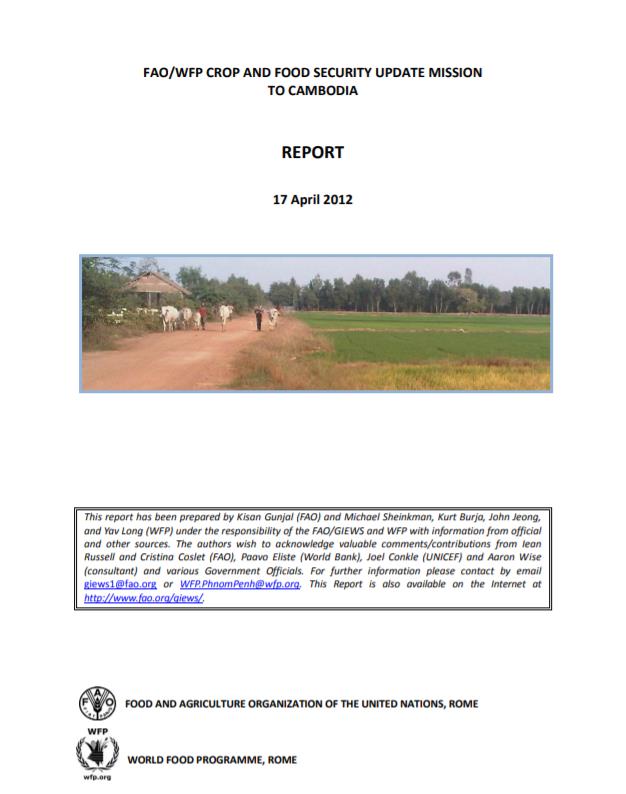
Special Report - FAO/WFP Crop and Food Security Update Mission to Cambodia
12/04/2012
In September and October 2011 Cambodia was affected by one of the worst floods since 2000. According to Government reports, heavy monsoon rains and the consequent overflowing of the Mekong and Tonle Sap rivers resulted in widespread flooding, affecting over 1.5 million people, displacing 214 000, as well as causing the loss of 247 lives.
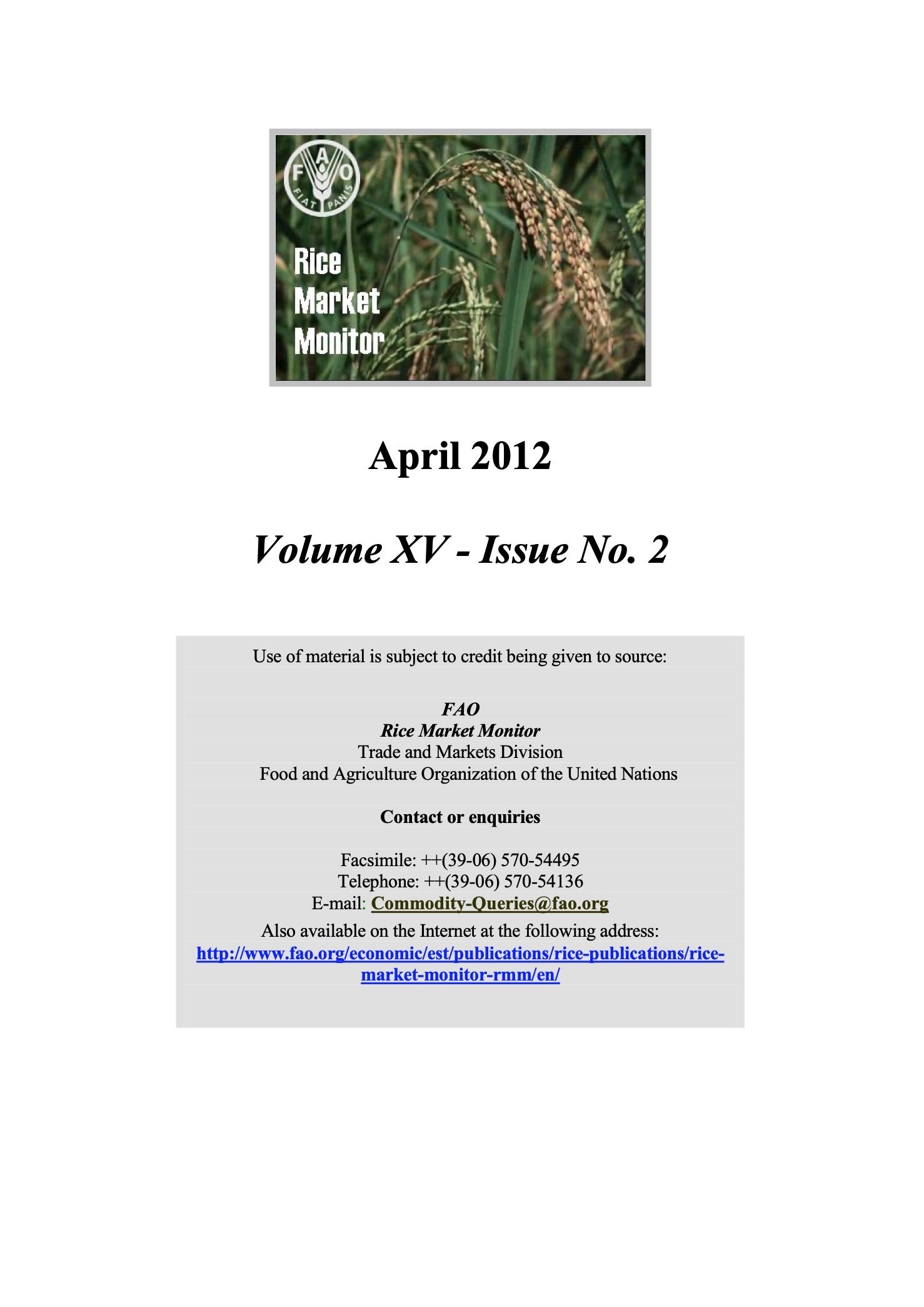
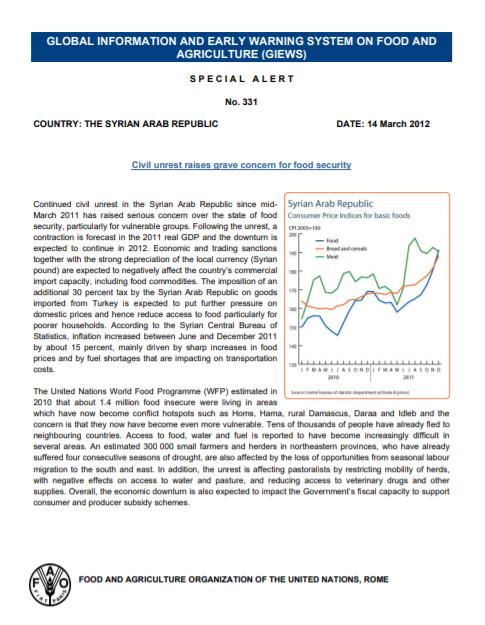
GIEWS Special Alert No. 331 - Syrian Arab Republic, 14 March 2012
14/03/2012
Continued civil unrest in the Syrian Arab Republic since midMarch 2011 has raised serious concern over the state of food security, particularly for vulnerable groups. Following the unrest, a contraction is forecast in the 2011 real GDP and the downturn is expected to continue in 2012. Economic and trading sanctions together with the strong depreciation of the local currency (Syrian pound) are expected to negatively affect the country’s commercial import capacity, including food commodities. The imposition of an additional 30 percent tax by the Syrian Arab Republic on goods imported from Turkey is expected to put further pressure on domestic prices and hence reduce access to food particularly for poorer households. According to the Syrian Central Bureau of Statistics, inflation increased between June and December 2011 by about 15 percent, mainly driven by sharp increases in food prices and by fuel shortages that are impacting on transportation costs.
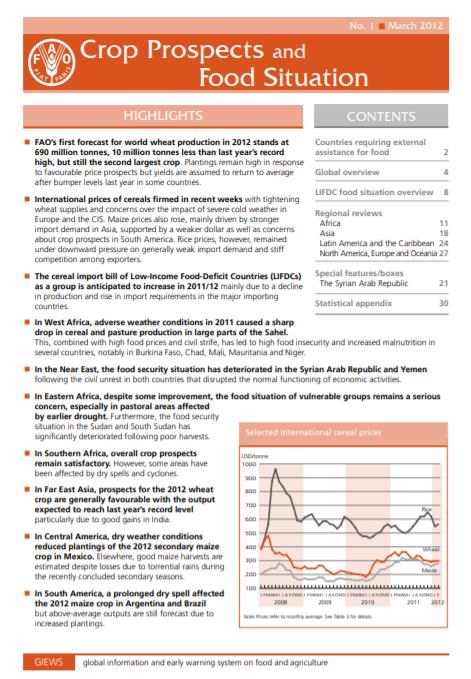
Crop Prospects and Food Situation #1, March 2012
08/03/2012
FAO’s first forecast for world wheat production in 2012 stands at 690 million tonnes, 10 million tonnes less than last year’s record high, but still the second largest crop. Plantings remain high in response to favourable price prospects but yields are assumed to return to average after bumper levels last year in some countries. International prices of cereals firmed in recent weeks with tightening wheat supplies and concerns over the impact of severe cold weather in Europe and the CIS. Maize prices also rose, mainly driven by stronger import demand in Asia, supported by a weaker dollar as well as concerns about crop prospects in South America. Rice prices, however, remained under downward pressure on generally weak import demand and stiff competition among exporters. The cereal import bill of Low-Income Food-Deficit Countries (LIFDCs) as a group is anticipated to increase in 2011/12 mainly due to a decline in production and rise in import requirements in the major importing countries.
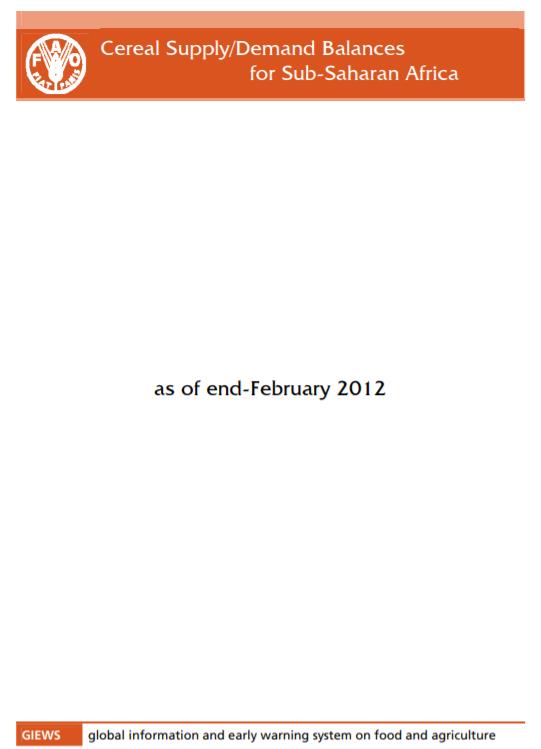
Cereal supply and demand balances for sub-Saharan African countries - No.1, February 2012
29/02/2012
The FAO/GIEWS Country Cereal Balance System (CCBS) is a database of annual supply and utilization balances for main cereals, covering all countries of the world. It has been maintained by FAO/GIEWS since 1980 and is updated on a continual basis. This statistical report, which is a subset of CCBS data, presents the current-year cereal supply and demand balances for all sub-Saharan African countries, highlighting cereal import and food aid requirements of each country. This report is complement ary to the FAO/GIEWS report Crop Prospects and Food Situation and is published four times a year, with the same schedule.
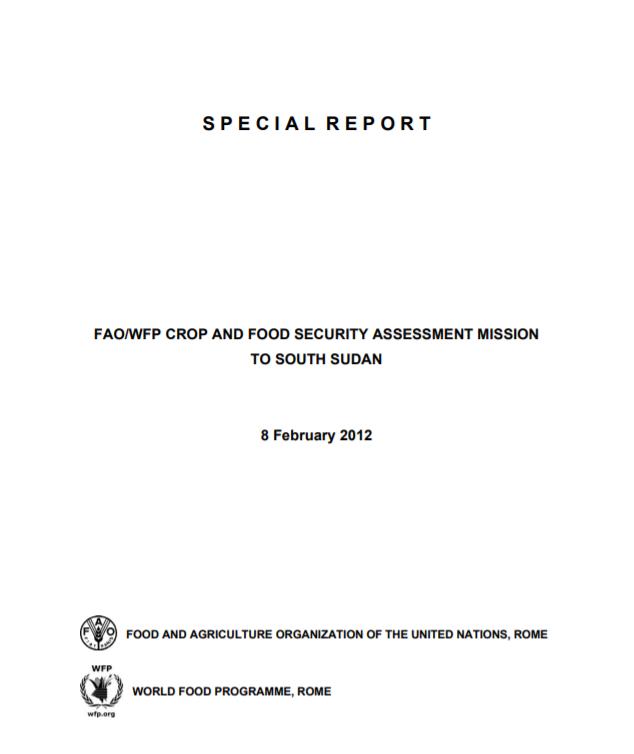
Special Report - FAO/WFP Crop and Food Security Assessment Mission to South Sudan - 8 February 2012
08/02/2012
An FAO/WFP Crop and Food Security Assessment Mission (CFSAM) visited South Sudan from 16 October to 10 November 2011 to estimate cereal production and assess the overall food-security situation. The mission was requested following the findings of the Rapid Crop Assessment (RCA) conducted by the Ministry of Agriculture and Forestry (MAF) in August in collaboration with FAO, WFP, FEWSNet and Norwegian People’s Aid (NPA). Based on the RCA scenario analysis, cereal production in 2011 was forecast to decline by between 30 and 60 percent relative to 2010, if the prevailing conditions at the time of the assessment persisted.
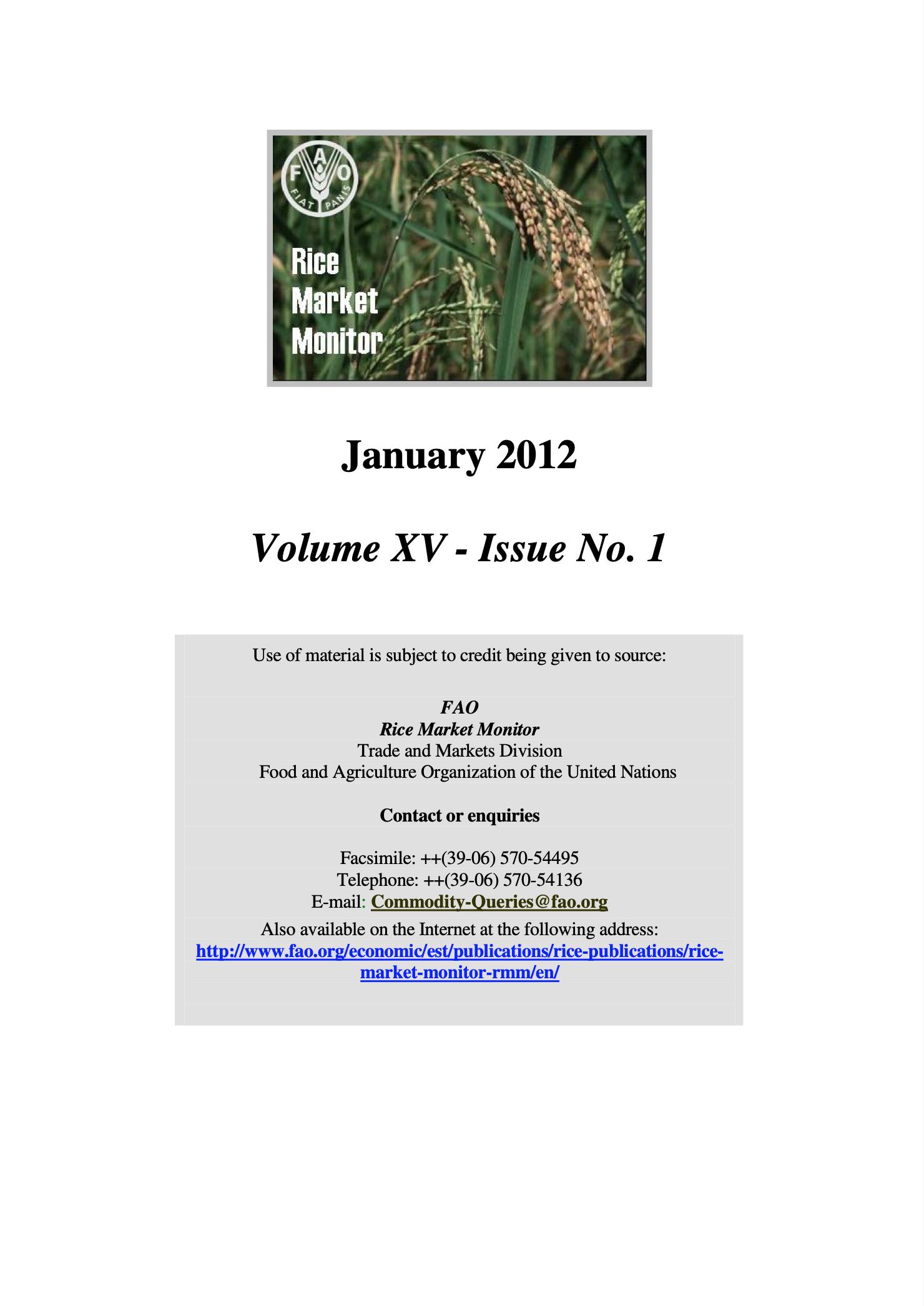
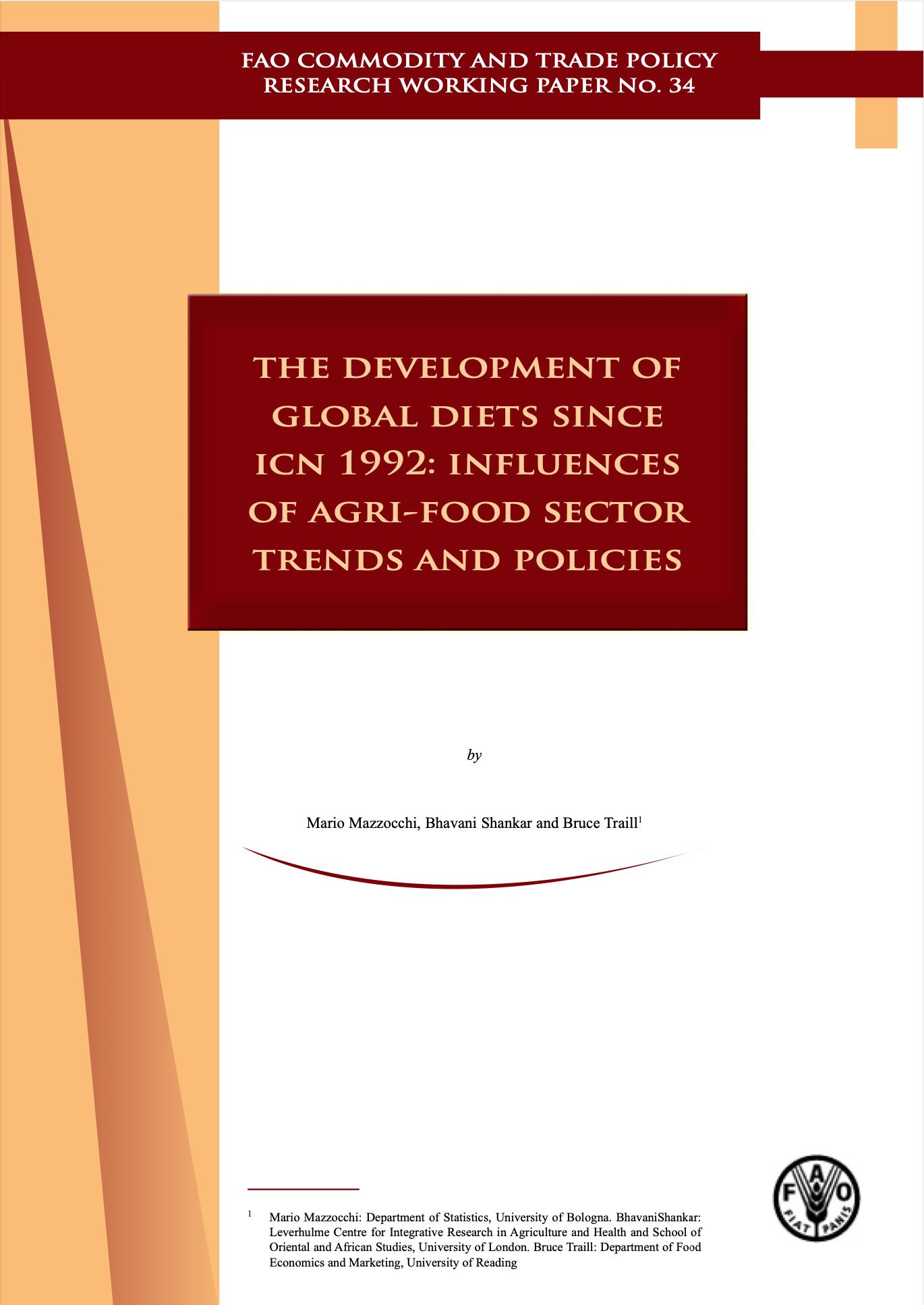
The development of global diets since ICN 1992
01/01/2012
The scope of this report is to discuss dietary and nutritional changes and their causes since the International Conference on Nutrition (ICN) 1992, with particular reference to developments on international food markets and policies. While the proportion of chronically hungry has been falling over the last two decades, the absolute number has remained stable at about 800m, and has been overtaken by the increasing numbers of overweight and obese individuals. Many developing and middle incom e countries are experiencing a nutrition transition characterized by a movement from diets associated with undernutrition to diets associated with overnutritrion. Overweight and obesity are prevalent among low socio-economic groups in middle-income and developed countries and among the better off in poorer countries.
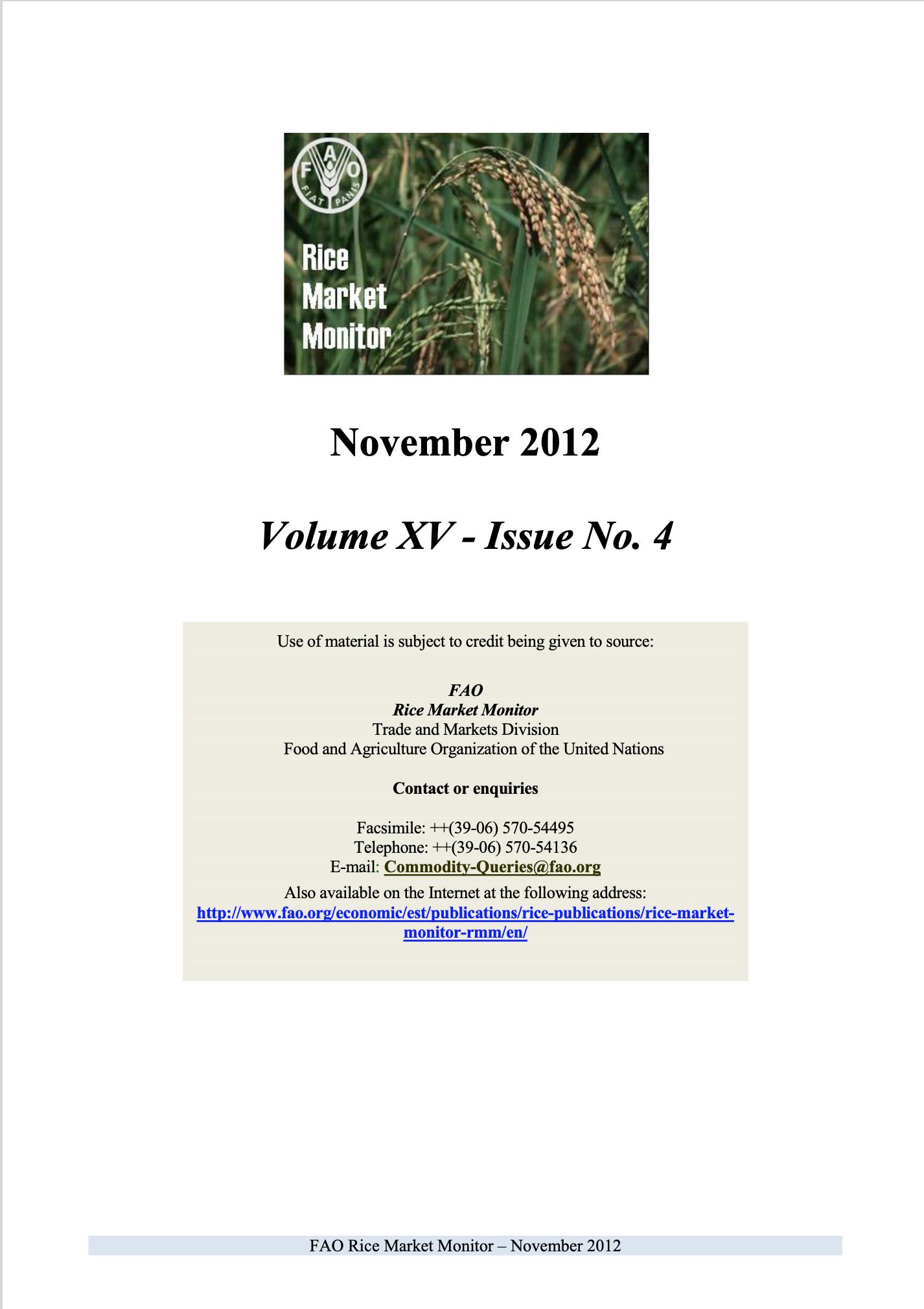
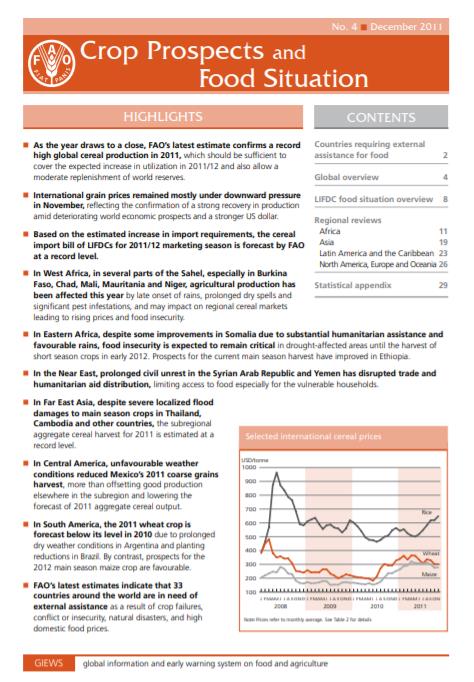
Crop Prospects and Food Situation #1, December 2011
08/12/2011
As the year draws to a close, FAO’s latest estimate confirms a record high global cereal production in 2011, which should be sufficient to cover the expected increase in utilization in 2011/12 and also allow a moderate replenishment of world reserves. International grain prices remained mostly under downward pressure in November, reflecting the confirmation of a strong recovery in production amid deteriorating world economic prospects and a stronger US dollar. Based on the estimated increase in import requirements, the cereal import bill of LIFDCs for 2011/12 marketing season is forecast by FAO at a record level.
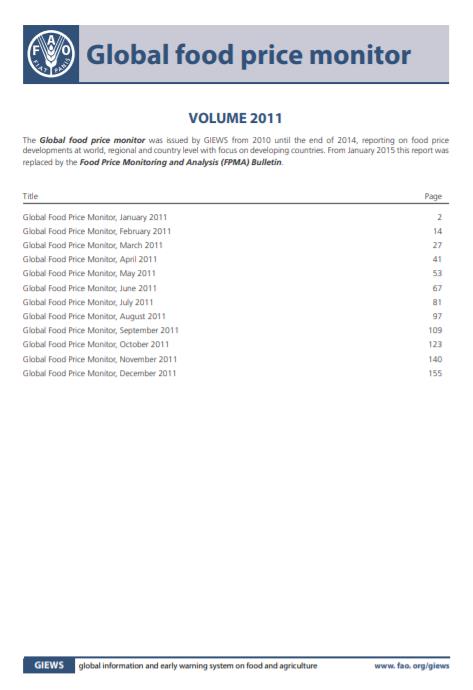
Global food price monitor - Volume 2011
08/12/2011
The Global food price monitor was issued by GIEWS from 2010 until the end of 2014, reporting on food price developments at world, regional and country level with focus on developing countries. From January 2015 this report was replaced by the Food Price Monitoring and Analysis (FPMA) Bulletin.
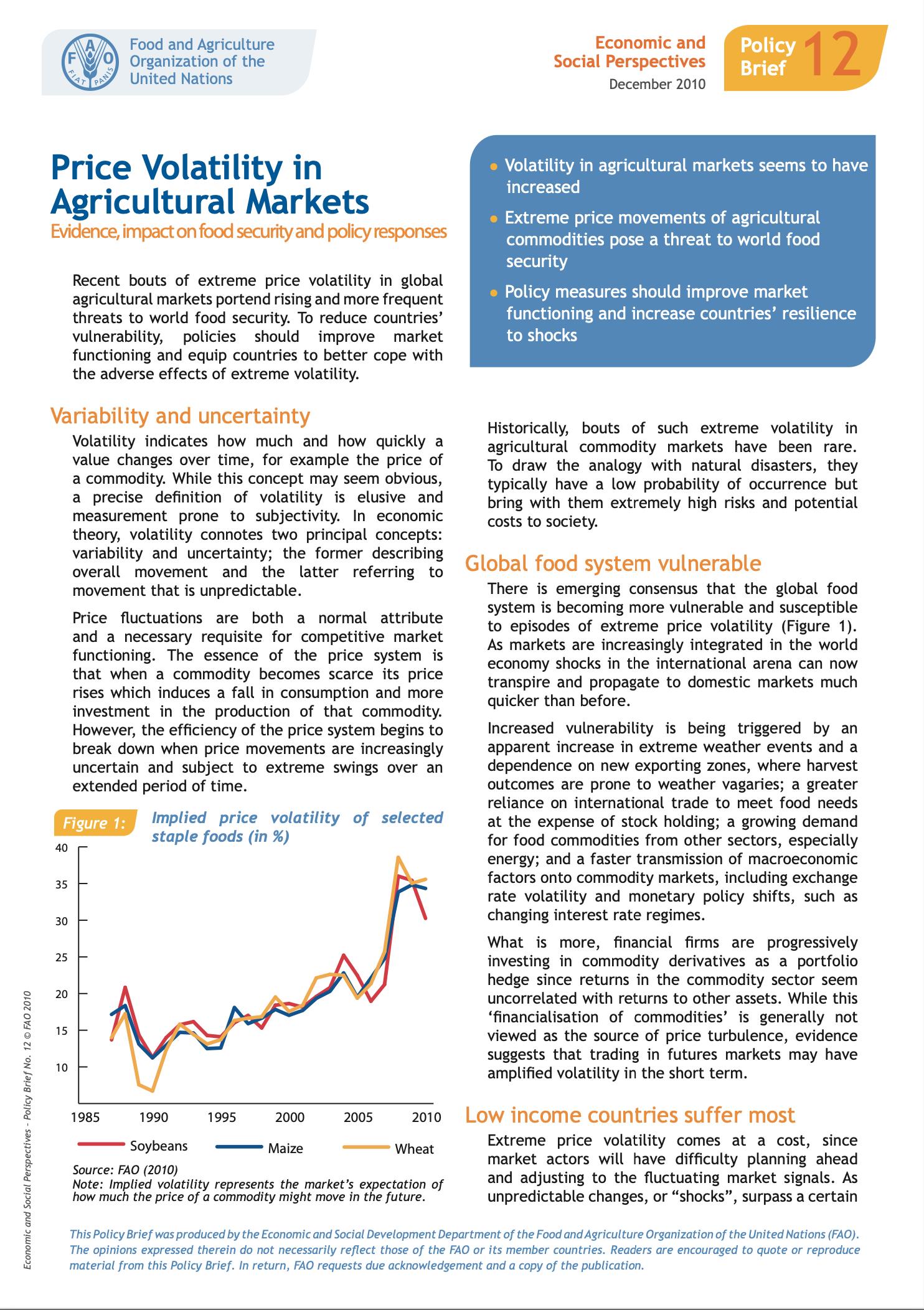
Price Volatility in Agricultural Markets (No. 12)
01/12/2011
Recent bouts of extreme price volatility in global agricultural markets portend rising and more frequent threats to world food security. To reduce countries’ vulnerability, policies should improve market functioning and equip countries to better cope with the adverse effects of extreme volatility.
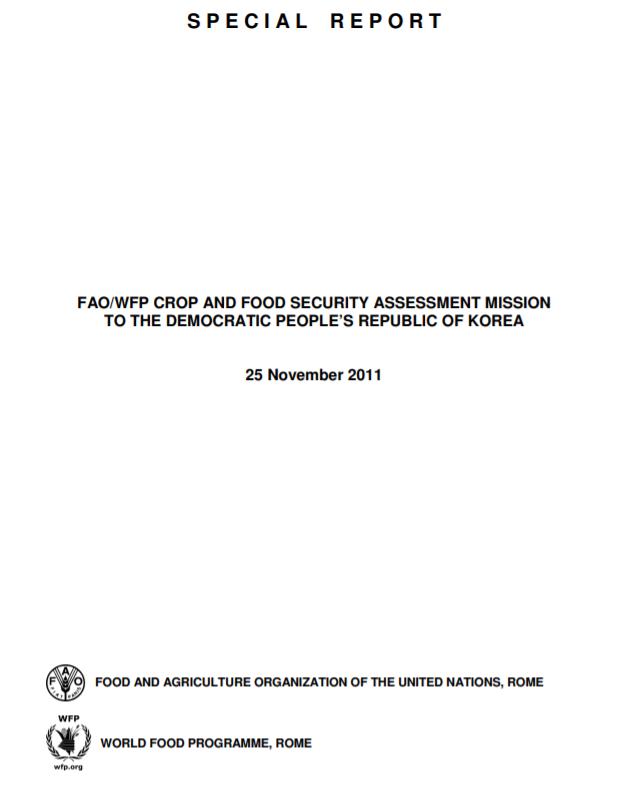
Special Report - FAO/WFP Crop and Food Security Assessment Mission to the Democratic People's Republic of Korea
25/11/2011
An FAO/WFP Crop and Food Security Assessment Mission (CFSAM) visited DPRK at the request of the Government from 3 to 17 October to assess the 2011 main-crop harvest, forecast the 2012 production of winter and spring crops, estimate cereal import requirements for the 2011/12 marketing year (November/October), to assess the household food security situation and estimate food assistance needs.
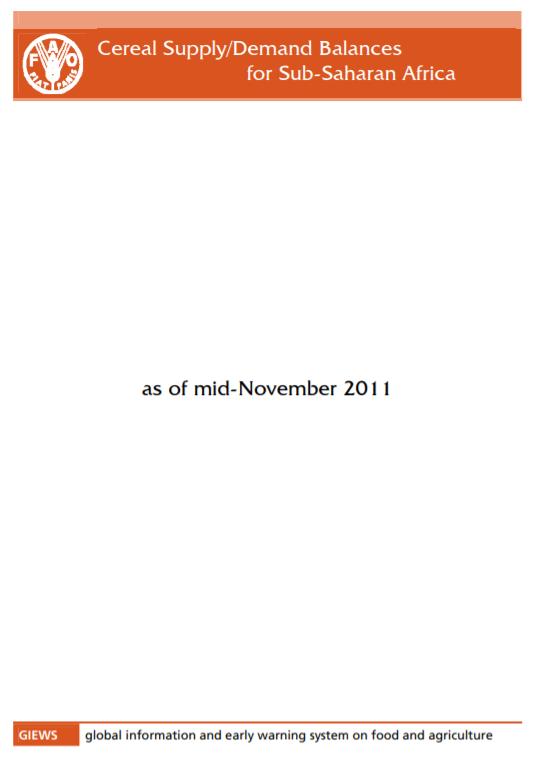
Cereal supply and demand balances for sub-Saharan African countries - No.4, November 2011
17/11/2011
The FAO/GIEWS Country Cereal Balance System (CCBS) is a database of annual supply and utilization balances for main cereals, covering all countries of the world. It has been maintained by FAO/GIEWS since 1980 and is updated on a continual basis. This statistical report, which is a subset of CCBS data, presents the current-year cereal supply and demand balances for all sub-Saharan African countries, highlighting cereal import and food aid requirements of each country. This report is complement ary to the FAO/GIEWS report Crop Prospects and Food Situation and is published four times a year, with the same schedule.
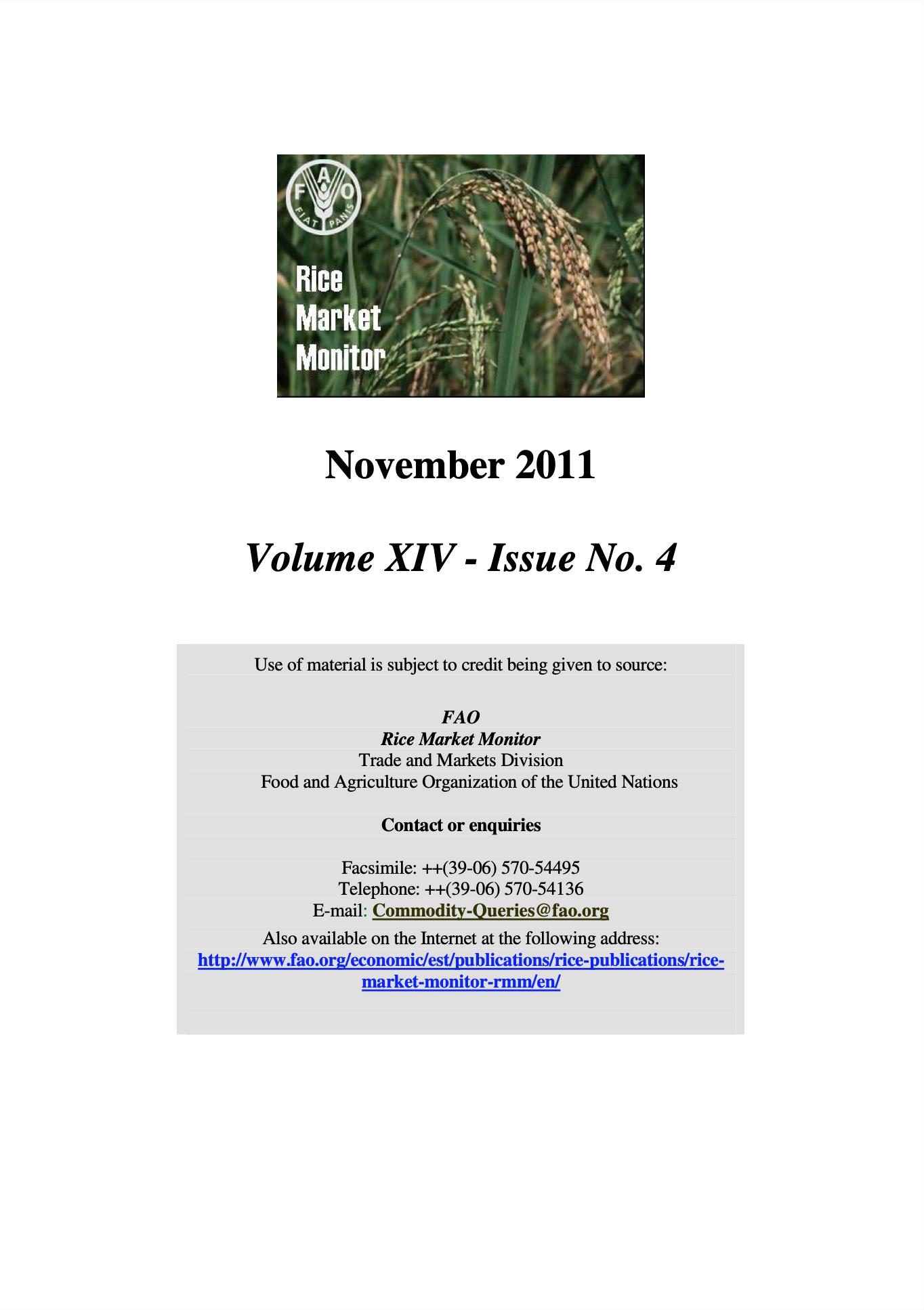
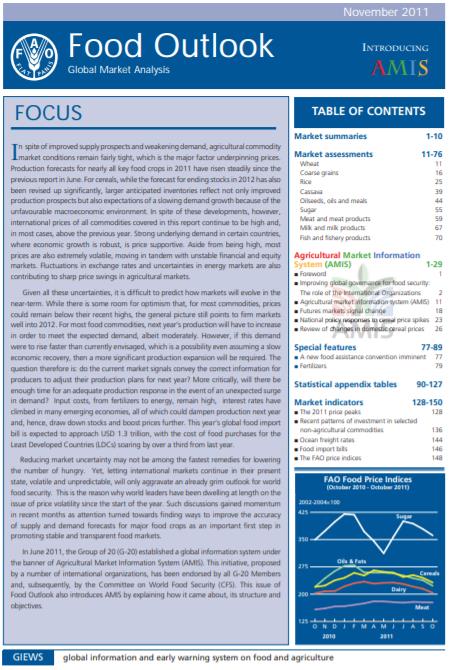
Food Outlook - November 2011
03/11/2011
In spite of improved supply prospects and weakening demand, agricultural commodity market conditions remain fairly tight, which is the major factor underpinning prices. Production forecasts for nearly all key food crops in 2011 have risen steadily since the previous report in June. For cereals, while the forecast for ending stocks in 2012 has also been revised up significantly, larger anticipated inventories reflect not only improved production prospects but also expectations of a slowing demand growth because of the unfavourable macroeconomic environment. In spite of these developments, however, international prices of all commodities covered in this report continue to be high and, in most cases, above the previous year. Strong underlying demand in certain countries, where economic growth is robust, is price supportive. Aside from being high, most prices are also extremely volatile, moving in tandem with unstable financial and equity markets. Fluctuations in exchange rates and uncertainties in energy markets are also contributing to sharp price swings in agricultural markets.
